|
Judging by the covers
When I first flipped through the pages of Cover Me, my instinct was to run to the library here at Ripster Hall to discover how my collection of vintage paperbacks had been stolen. Fortunately, my security precautions (an under-butler on 24-hour duty with a blunderbuss and, of course, the hounds…) were intact, but a significant number of my paperback collection do appear in Colin Larkin’s wondrous Cover Me: The Vintage Art of Pan Books 1950-1965 [Telos].
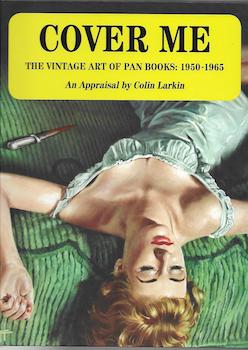
Not all Pan paperbacks were thrillers or crime stories, though many famous titles and fictional detectives did figure in what Colin Larkin calls the golden age of lush, painted cover art. Notably an unflattering but instantly recognisable portrait of Hercule Poirot in action and American private eye ‘Lew Arliss’ (possibly misheard) in a cover design which hopefully never got to the printer’s.
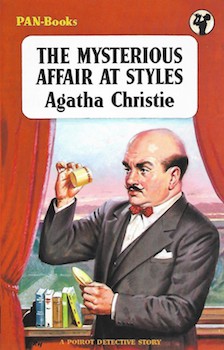 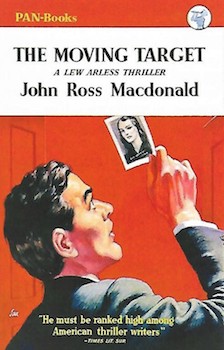
Apart from the sumptuous illustrations, Cover Me gives a useful potted history of popular paperbacks in general (Fenimore Cooper’s The Last of the Mohicans being one of the earliest in 1866) and Pan Books in particular. I did not know, until now, that the iconic Pan logo of Pan playing a pipe which usually appeared in the top right corner of the cover and on the spine, was designed by Mervyn Peake. Nor did I know that a publisher’s logo is often known as a ‘colophon’ which proves you learn something every day. However, I do know (as the author does not) than Kenneth More was the star of Reach For the Sky and not The Dam Busters.
Novels which were filmed and film ‘tie-ins’ feature throughout in the days before an expensive still from a film or television drama could be used and one has to admire the portraiture of the Pan artists who captured stars such as David Niven (numerous times), Dirk Bogarde and Richard Todd and here, Sophia Loren and Alan Ladd in 1957 and John Wayne in 1958.
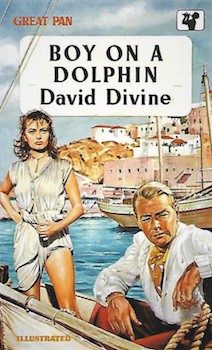 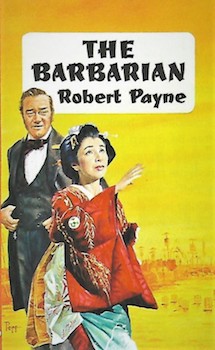
For me, this is blissful nostalgia but Cover Me is also a vital resource for students of art and design, the history of popular fiction and the days, pre-Amazon, when you really could tell a book by its cover.
Critic’s Choice (or Choice Critics)
As if the year 2020 was not grimly memorable enough, it also marks the twentieth anniversary of when I experienced that ultimate curse of the newspaper crime fiction critic: seeing someone else’s name on top of their regular review column.
It happened to me on the whim of a newly-appointed literary editor, who often regard reviewing ‘genre’ as opposed to ‘proper’ fiction as patronage to be disbursed among friends and colleagues, and I took the hint and realised that my career as the Daily Telegraph crime critic was over after eleven years and having reviewed at least 420 crime novels in print. (I say ‘at least’ as I have press cuttings for 420 but I may have missed or lost some over the years.)
I was not the first newspaper reviewer to suffer this indignity – I know both Harry Keating and Jessica Mann were similarly treated and I am sure I will not be the last. In my case, however, unemployment did not last long. I was already reviewing for several magazines and just before Christmas was recruited by the Birmingham Post where the late F.E. ‘Bill’ Pardoe had reviewed crime fiction for many years.
Thus Mike Ripley’s Crime Guide in the Telegraph became Mike Ripley’s Crime File in the Birmingham Post in January 2001.

Now appearing monthly, that column was to cover more than 500 titles in the following eight years (when the Post changed formats) and that first one featured one of Donald James’ Russian thrillers, the latest Kate Ivory crime novel by Veronica Stallwood, the new Michael Connelly and Mercy Alexander, the only novelby George Tiffin, but the most enthusiastic review was reserved for the news that all eight of Lionel Davidson’s written between 1960 and 1992, were to be reissued by Arrow and I am delighted to say are still in print today.
Having touched last month on the sterling work being done by crime fiction reviewers on The Times, it was remiss of me not to mention that Joan Smith has returned, I am delighted to say, to the reviewing fold in The Sunday Times. A noted crime writer herself, I reviewed her novel Full Stop in 1995 saying that it was ‘Witty, literate and with a climax worthy of Hitchcock’.
I just thought I’d mention that before my new book comes out in the Spring…
Francis Durbridge and the Temple of Paul
Francis Durbridge (1912-1988) was probably the most popular writer of BBC radio and television mysteries from the 1930s to the 1970s and is fondly remembered for his creation of the fictional sleuth Paul Temple, but he also wrote serials for newspapers and magazines and short stories. Many of these not seen since first publication more than seventy years ago have now been ‘re-discovered’ by Durbridge expert Melvyn Barnes who edits Murder At the Weekend published by Williams & Whiting.
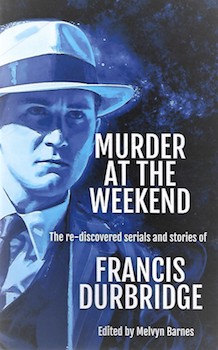
The anthology contains four novellas (originally newspaper serials) from the years 1952 to 1959: The Nylon Murders, The Yellow Windmill, The Man Who Beat the Panel and The Face of Carol West plus twelve short stories previously only seen in the Evening Standard in 1947.
Never Forget a Book Unreturned
Back in the days when I was a young and impressionable crime writer and the Crime Writers’ Association was foolish enough to have me as a member, I was quizzed at one meeting by a fellow writer (who went on to high office in the CWA) about ‘what I saw’ in the new wave of American crime writers who were making their mark in the UK. These would have included, at the time, Elmore Leonard, James Ellroy, James Crumley, Charles Willeford and James Hall, all of whom were hot topics of discussion round at the Murder One bookshop.
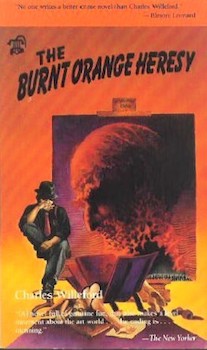 .jpg)
As I happened to have with me a copy of Charles Willeford’s The Burnt Orange Heresy, I generously loaned it to my CWA colleague. At the following month’s CWA gathering, he reported that he had read it, but ‘didn’t get it’ and wasn’t sure it was a crime novel at all.
From distant memory, I recall that it certainly was an unusual novel and not one of my favourite Willeford’s, but it was only when I saw recently that there was now a film of the book – which transposes the action from Florida to Italy and stars Mick Jagger – that I remembered that I never got my copy back!
Rock and Rollers
I have never seriously claimed to have been ‘down with the kids’ when it comes to modern music, but I am happy to report that my old chumette Denise Danks always was – and still is.
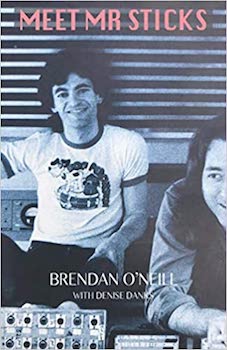
Denise has co-authored the life story of her friend Brendan O’Neill, the drummer for Rory Gallagher, Nine Below Zero and now Slim Chance, which I believe are all references to modern beat combos. Meet Mr Sticks is now out, published by Glimmer Twin Publishing, but it is far from Denise’s first brush with pop music.
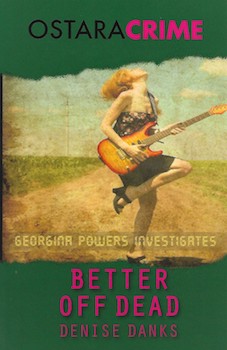
Her second crime novel, Better Off Dead, was set in the colourful, and rather dangerous, world of rock music and I had the delightful task of editing a new edition for Ostara Crime in 2012.
The Postbag Bulges Twice
My casual remark about a bumper postbag to this column last month sparked off a positive deluge of correspondence with messages arriving by post, email, owl and raven. There were the usual polite (and much appreciated) votes of thanks from publishers and authors for mentioning their books and a smattering of the slightly acerbic and more terse missives from authors asking why their books had not been mentioned (usually for legal reasons).
But the bulk of the postbag was made up of an outpouring of support for the French television series Spiral, which really warmed my heart as I had thought myself a voice crying in the Parisian wilderness until now. I find my enthusiasm is shared by at least thirty publishers, editors, crime writers and readers and one, a very distinguished crime writer, declared that she had ‘a thing about grubby vests’ and even cited a line from Byron to justify her obsession.
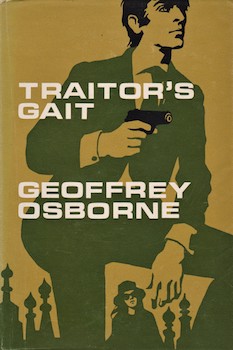
And having reported on Geoffrey Osborne’s first novel in more than 40 years, I am contacted by a trusted book dealer (who holds the coveted ‘By Appointment to Ripster Hall’ patent) who proudly announced that he had two Osborne first editions in stock, one of them Traitor’s Gait, first published by Robert Hale in 1969.
On the same theme of vintage thrillers, an American publisher, whose tastes in crime fiction I usually admire, writes to say he will be purchasing a copy of Kiss Kiss Bang Bang, an award-winning history of vintage British thrillers, to check whether one of his favourite thrillers, The Bay of Deception by Sidney Shelley is mentioned.
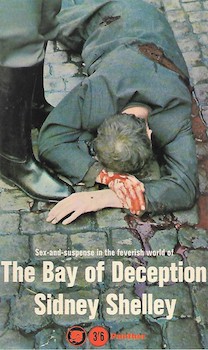
Sadly, the award (etc. etc.) does not and as penance the incompetent author has immediately tracked down a copy. First published in 1964, this thriller (as yet only glanced at) poses a number of questions. Was it really written by the great-nephew of Percy Bysshe Shelley, a professional soldier who became the 8th Baronet of Castle Goring, who spent much of his long life (1880-1965) in France? Was this the Sidney Shelley who also wrote The McKenzie Break, a thriller about Germanprisoners-of-war in a camp in Scotland during WWII, which was made into a rather good film in 1970? Was the book first published or edited in America? Early indications suggest this: ‘trousers’ are ‘pants’. ‘petrol’ is ‘gasoline’, a car driver ‘floor-boards’ the accelerator, and the French eat ‘rutabegas’ though no true Frenchman would ever admit to eating turnips, even during wartime.
Such questions must be answered and so I will read it properly and report back at a future date by which time I am sure my knowledgeable readers will have already supplied the answers.
Also from across the Atlantic, Canada’s leading bibliophile when it comes to thrillers and crime fiction writes demanding my opinion on Mara Thomas’ City of Spies [Zaffre] but sadly I have to tell him that for legal reasons, I have not read it.
A long-time reader (but first time correspondent) from England writes to share my enjoyment of Spiral whilst also recommending another French policier series, Braquo, which ran from 2009 to 2016, as ‘well-filmed and gritty… so different from much recent TV, particularly the vogue for missing or dead children …’
He also insists that I keep an eye out for the fourth novel in the ‘Butcher’s Boy’ series begun by Thomas Perry back in 1982, titled Eddie’s Boy which is due out this month.
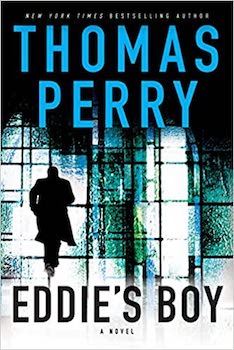
It is a long time since I read anything by the award-winning Thomas Perry and I will certainly keep an eye out for this latest instalment in a series where the hitman hero has aged in near real time since his first appearance, although I am as yet unsure who will be publishing Eddie’s Boy in this country.
A further recommendation of some vintage hardboiled crime fiction comes from California publisher Stark House and their wonderfully-named imprint Black Gat, who have introduced me to the author Calvin Clements (1915-1997) via his 1952 novel Satan Takes The Helm.
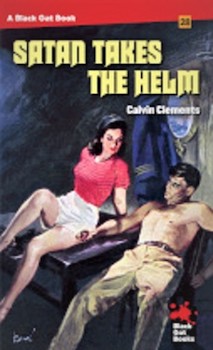
Clements wrote only four novels before switching to a prolific career writing for American television shows (including 39 episodes of Gunsmoke). Satan Takes The Helm sits firmly in the classic tradition of post-war noir– think black-and-white films like Double Indemnity and The Postman Always Rings Twice – and don’t be surprised to find that Satan is a woman (and don’t think that title hasn’t already been used). In this case, the femme fatale is the co-owner and predatory wife of the captain of a tramp freighter trading to the Orient out of San Francisco, for whom a marriage of convenience has become inconvenient and a new First Officer for the ship looks like a suitable replacement for the twin roles of Captain and husband. You just know this won’t end well.
Following another unsolicited recommendation I will also be keeping a bloodshot eye out for Castle In The Sky by that Grand Master of American crime writing Donald Westlake (1933-2008).
.jpg)
First published in 1980 and now revived by Hard Case Crime [Titan Books], I am told this is one of Westlake’s light-hearted ‘caper’ stories, as opposed to his tougher outings under numerous pen-names. I also have read that it was written for the benefit of the IRS and so perhaps the author’s heart wasn’t quite in it. However, as it is set in the Europe, mainly Paris, of forty years ago, I am intrigued to discover Westlake’s take on things European. In the year when Brexit “gets done” I fancy a trip down memory lane to those halcyon days and if anyone can cheer me up, Donald Westlake can.
Letters to this column can be sent via shotseditor@yahoo.co.uk with ‘GAWM’ in the subject line, where they may be cheerfully ignored, just as was this anonymously donated picture of a dust jacket which came without further comment.
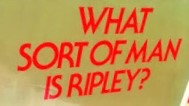
|
|
Books of the Month
Technically a November title, but worthy of being the book of any month, is the posthumously-published Play The Red Queen by Juris Jurjevics [No Exit].
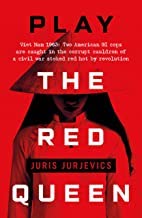
A co-founder of Soho Press in America (a name familiar to many a British crime writer), Jurjevics, who died in 2018, served in Viet Nam in the 1960s, a conflict which is summed up in the novel as one the US ‘can’t win, can’t lose, can’t quit’. He puts all his experiences there into Play The Red Queen and the result is a political thriller, ostensibly the hunt for a female assassin in Saigon in 1963, which also doubles as history lesson leaving no corrupt stone of Viet Nam unturned. This could be a polemic had not Jurjevics invented two splendid heroes in the shape of a duo of military investigators who find more enemies than friends at every turn, though neither are above wetting their beaks in the twin currencies of free-flowing US dollars and home-grown narcotics. Packed with suspense (watch out for the booby-trapped shower), deceit and gruesome violence, as well as good spy tradecraft and Vietnamese superstitions, this must be one of the most gripping thrillers of the year.
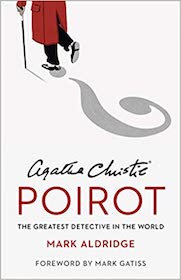
You may take exception to the sub-title The Greatest Detective in the World but that should not prevent you extracting the maximum enjoyment from Mark Aldridge’s monster study Agatha Christie’s Poirot [HarperCollins] which covers in exhaustive detail, the career of Hercule Poirot in novels, short stories, plays, films and television and the actors who have played the character from Charles Laughton to Kenneth Branagh. Profusely illustrated this is a magic bran tub of goodies to dip into and I am delighted to see that it gives due credit to the little-seen Murder by the Book from 1986, where Poirot was superbly played by Ian Holm, who is better known to one generation of my readers as Bernie Samson and to another as Bilbo Baggins.
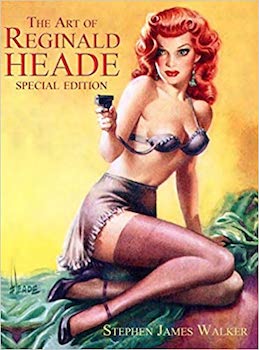 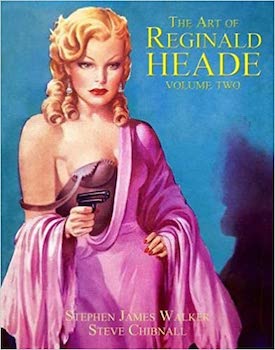
Surely the ideal Christmas present for anyone interested in pulp fiction, popular art and social history this year will be the Special Edition Volume 1 of The Art of Reginald Heade by Stephen James Walker along with its companion Volume 2, by Stephen Walker and Steve Chibnall both published, clearly as labours of love, by Telos. From raunchy, stocking-top covers for Hank Janson (and many other authors’) pulp thrillers and more restrained covers for conventional crime series such as The Saint, to romantic fiction (including Barbara Cartland) and westerns to illustrating classics such as Treasure Island, for comic strips to advertising campaigns, Reginald Heade (1901-1957) packed an awful lot of artwork into a relatively short life.

And a real last-minute present, as it is published on Christmas Eve by Zaffre, would be The Spiral by rising Australian star Iain Ryan. This has absolutely nothing to do with the aforementioned French television series. Another spoiler alert: this may not appeal to fans of traditional mysteries as it involves some awareness, or at least suspended disbelief, about the crazes for role-playing Dungeons and Dragons games so popular in the 1980s.
{As part of my research for a novel back then, I actually went on an introductory ‘quest’ in a series of caves near Biggin Hill in Kent. The wizard/warlock/whatever who was guiding us went by the game name of ‘BBW’ which I discovered was short for ‘Bishop of Bath and Wells’. That, if little else, made it into the book.}
The Spiral starts with a disciplinary hearing for a female lecturer at a Brisbane University. She is then shot by the female student she thinks has accused her and the student then shoots herself, at which she is more competent, as she doesn’t survive but the lecturer, Erma, does. Once recovered, Erma sets out on a quest to discover what sent her student into a homicidal rage, as well as giving us an insight into her fantasy quests involving orcs, dwarves and magic, as a counterpoint to her trawling through Brisbane’s very seedy nightclub scene. Luckily, Erma is a proficient warrior in real life, which she needs to be once she discovers that dungeons, if not dragons, really do exist and all her Thai boxing skills are required for the very bloody climax, Not a book to be read at a family Christmas gathering, unless the family’s called Manson.
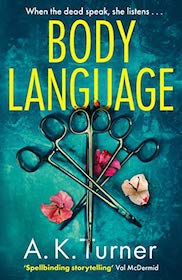
In The Sixth Sense, the kid famously saw ‘dead people’. In Body Language by A.K. Turner, the central character hears dead people, usually when they are lying on a slab in the mortuary where she works, which sounds like the ideal job for a self-proclaimed ‘Goth’ who brough dead animals home when a child.
When a new arrival in the mortuary, seems to whisper ‘I can’t breathe’ (an ominous phrase indeed this year), our young goth heroine Cassie Raven is on the case immediately. Things become far more complex when the body of a former teacher and mentor of Cassie’s arrives at her place of work and has some even more chilling post-death words for Cassie personally: ‘It’s not my time yet’.
Under the name Anya Lipska, Alison Turner has given us a trio of crime novels set mostly in the East End and its Polish community. Fans of that series need not be dismayed by her change of tack into this visceral (and I mean that) thriller, as there is a wonderful Polish grandmother character in here to lighten the gory detail.

Thomas Bexley, an Edwardian police forensic officer, not only hears dead people, but sees them, photographs them and, it seems, gets letters from them in Letters From the Dead by Sam Hurcom [Orion]. A year after the ‘Dinas Powys affair’ (readers should really have read Hurcom’s A Shadow on the Lens), Bexley is understandably in a state, basically having cracked up and taking solace in a rum bottle.
A series of mysterious kidnappings perpetrated by the so-called ‘Wraith of London’ drags Bexley back into investigative work when his former mentor at Scotland Yard is fingered as the prime suspect. Sustained by regular libations of rum, Bexley follows a vague lead north to Scotland, a bit like Richard Hannay was to do half-a-dozen years later in search of the 39 Steps, reluctantly picking up a female sidekick on the way. With help from the spirit world, Bexley returns to London to confront his, and several other, demons.
By the end of the case, Bexley is determined to quit police work but it seems the dead often require the services of a good investigator and another spooky adventure is clearly on the cards. There used to be an old black-and-white TV series called Ghost Squad. Sam Hurcom takes the title literally in his ridiculously readable cocktail of the Gothic and the historical crime novel.
Picks of the Year
To my mind, John Lawton’s Hammer To Fall [Grove Atlantic] and Ian Rankin’s A Song for the Dark Times [Orion] were, respectively, the best examples of spy and crime fiction this year.
The best debut by a country mile driven fast, was Blacktop Wasteland by S.A. Cosby [Headline] and the best thing in translation for my money was Painted In Blood by Ilaria Tuti [Weidenfeld].
Well worth five star reviews were (in no particular order): The Good Killer by Harry Dolan [Head of Zeus], The Split by Sharon Bolton [Trapeze], Brixton Hill by Lottie Moggach [Corsair], The Night of Shooting Stars by Ben Pastor [Bitter Lemon] and Angel’s Inferno by the late William Hjortsberg [No Exit], which also qualifies as the most-anticipated ‘what happened next?’ follow-up to a thriller, more than 40 years after the original.
The revival of the year was Kind Hearts and Coronets by Roy Horniman [Dean Street Press], first published as Israel Rank in 1907; black humour and social satire without the concomitant crudities.
Watchlist for Next Year
For sheer quantity, James Patterson will be a difficult name to miss as by my estimation he has five novels scheduled for publication in the first half of 2021 plus a sixth co-written with somebody called Bill Clinton.
I will personally be on the look-out for thrillers set during WWII by Simon Scarrow, Jack Grimwood and Graham Hurley and the new stand-alone chiller The Cut by Christopher Brookmyre, to be published by Sphere in March.

And for those in a travel-broadens-the frame of mind, 2021 kicks off with a pair of mysteries set in Argentina. The Foreign Girls by Sergio Olguin [Bitter Lemon] features his journalist heroine from his much-praised The Fragility of Bodies, and Repentance [Weidenfeld] is a debut novel by Eloisa Diaz.
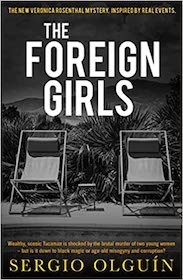 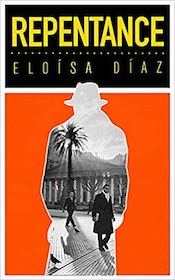
From the Rain Forest
By pure chance I came across this five star review on Amazon last month of a book entitled Mr Campion’s Farewell:
Superb book! Was sceptical at first at the thought of a Champion novel not written by Allingham herself but was pleasantly surprised. The plot was excellent and writing quality not quite up to Mrs A's but came a very very close second. I have read all Mike Reid's Champion novels and can recommend every one.
Although I am uncertain as to who “Champion” is, and “Mrs A” surely refers to Miss Margery Allingham (or Mrs Margery Carter), I feel that author Mike Reid can be ridiculously pleased with this review.
VHS Memories
In the days before Netflix there were DVDs (and something called Blu-Rays which I never fathomed), and before then VHS video tapes which gave us the phrase ‘straight to video’ to describe any film not deemed good enough to find a home in the local Odeon, or indeed anything sub-standard.
Living in the countryside some miles from a convenient cinema, however, a local newsagent who provided a video rental service offered a cultural lifeline, especially with a three-for-two offer on tapes at the week-end. In this way I saw many excellent films which also introduced me to some fine American crime writers, including: Cop (James Ellroy), To Live and Die in L.A. (Gerald Petievitch) and Eight Million Ways To Die (Lawrence Block).
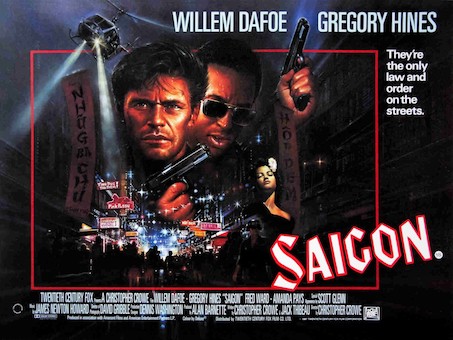 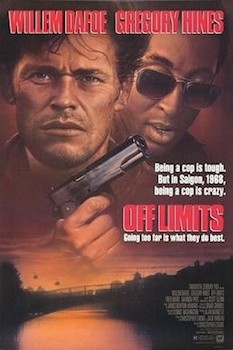
One film, which I only saw once but the memory of which has stayed with me since about 1989, was Saigon, also known as Off-Limits, starring Willem Dafoe and Gregory Hines (the excellent dancer and damn’ good actor) as a pair of military policemen in Viet Nam in 1968 trying to solve the murder of a prostitute whilst much other murderous activity was going on around them.
The film probably had an alternative title to distinguish it from the 1948 film noir Saigon starring Alan Ladd and Veronica Lake, a film I never found on VHS but has now gone on my bucket list.
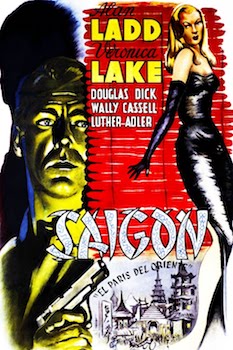
All this occurred to me as I was reading the outstanding thriller Play the Red Queen– see Books of the Month – which I highly recommend.
Lovejoy Recommends
I usually, well, often – okay, sometimes, – take personal recommendations on what to read seriously. Many years ago, whilst working as a scriptwriter on the BBC’s Lovejoy series, its star Ian McShanewould take me to dinner (always a Chinese restaurant) and the conversation, once we had covered the fortunes of Manchester United, would invariably turn to crime fiction and comparing favourite authors.
There was one American author in particular whom Ian raved about and insisted I try: Jerome Charyn. I dutifully followed his recommendation and as soon as I could, got hold of Blue Eyes, the first of Charyn’s ‘Isaac Sidel’ crime novels, which certainly impressed me but for some reason I allowed Jerome Charyn to slip off my hit list. He is now back on it with a bullet (as the young people say) with the publication here of Cesare by No Exit Press, who are ending the year with a flurry of excellent titles.
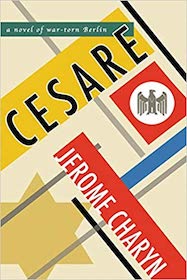
Charyn is an academic and a novelist not confined to crime fiction and Cesare is by no means a straightforward thriller, though its setting, Berlin in 1943, and the plight of Jews under the Nazis, plus the fact that Admiral Canaris, head of the Abwehr spy network, is a central character, suggests we may be in Philip Kerr territory. Far from it, for this is a dense novel of ambiguity which pays homage to the classic German horror film The Cabinet of Dr Caligari, is at times operatic in tone with wildly memorable characters and, at the end, has a positively dreamlike quality. It is quirky, hypnotic and fascinating and has made me go out hunting more of Charyn’s idiosyncratic fiction.
Waiting for the Jab
Sadly, but probably sensibly, the postponed 2020 CrimeFest held in Bristol has been rescheduled again to 12-15 May 2022 to allow time for the much-anticipated vaccines to combat the current plague to be administered and take effect.
Keep safe, keep well, keep reading,
and have as Merry a Christmas as possible.
The Ripster

|